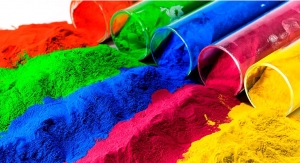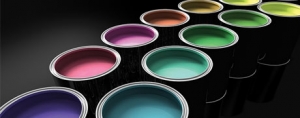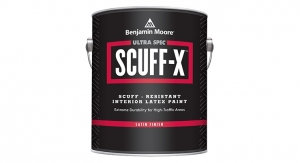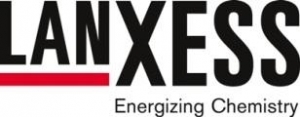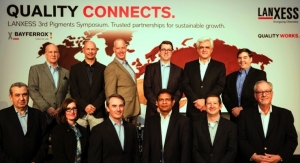06.02.17
Bayferrox yellow, red and black pigments from specialty chemicals company Lanxess have been recertified for pre-consumer recycled iron oxide content from SCS Global Services (SCS). The company formally known as Scientific Certification Systems, Inc., based in California, is a global leader in independent, third-party environmental certification, auditing, testing and standards development. Lanxess first achieved certification from SCS for pre-consumer recycled iron oxide content in 2014 and, to date, remains the only iron oxide pigments producer to hold this accreditation.
SCS accessed yellow, red and black Bayferrox iron oxide pigments and verified the popular shades contain high percentages of recycled content. Using Bayferrox pigments with SCS certification for coloring concrete or other materials used in buildings allows project teams to factor in the pigments when calculating overall percentage of recycled content a building has, to support the implementation of a global green certification strategy.
“Lanxess is the only iron oxide pigments producer to qualify and offer the market SCS certification on the recycled content of its products. This means that the final product includes up to 92% recycled content. Our customers who have a LEED-driven purchasing strategy will benefit from this certification, while supporting a more sustainable environment,” says Hans-Peter Baldus, head of Lanxess Inorganic Pigments, Americas region.
“We know that especially in locations like North America, Brazil and Europe, this is an important driver in the construction market, and we are proud to offer our customers this added value for their construction applications.”
LEED (Leadership in Energy and Environmental Design) is an internationally recognized green building program developed by the U.S. Green Building Council (USGBC) for buildings, homes and communities. The program guides the design, construction, operations and maintenance of buildings and is the most recognized and widely used third-party verification for green buildings in the world.
According to the USGBC, Green building is defined as an integrative process that focuses on the relationship between the built and natural environment. The foremost considerations of green building include the basic elements of energy use, water use, indoor environmental quality, material selection and the building’s effects on its site. The LEED green building rating system contains credit categories around those elements, acting as a framework for decision-making for project teams. Recycled content is one of the criteria in the materials and resources credit category.
Because of LEED, an entire green building industry has materialized, expected to be worth up to $248 billion in the U.S. alone by 2016, according to the USGBC.
As the world’s largest producer of iron oxide pigments, Lanxess sees the sustainability of its products and processes as absolutely essential. To ensure a reliable and sustainable supply of iron oxide red pigments to its customers globally in the long term, Lanxess invested in the construction of a new production site in Ningbo, China. It uses the Ningbo Process, which is based on patented technology that is designed to meet and exceed the latest environmental standards in the production of yellow-cast red pigments.
In addition, all of the production plants in the inorganic pigments production network are based on processes that are subject to the same HSEQ directives regardless of where in the world they are. All production facilities are certified to ISO 9001 and ISO 14001 and are regularly monitored.
Lanxess inorganic pigments display high color strength, are extremely lightfast, weather-resistant and are characterized by their high quality and environmentally-friendly processing. Available as powders, liquids and free-flowing compact granules, they bring color to many markets, namely in construction, paints and coatings, and plastics.
SCS accessed yellow, red and black Bayferrox iron oxide pigments and verified the popular shades contain high percentages of recycled content. Using Bayferrox pigments with SCS certification for coloring concrete or other materials used in buildings allows project teams to factor in the pigments when calculating overall percentage of recycled content a building has, to support the implementation of a global green certification strategy.
“Lanxess is the only iron oxide pigments producer to qualify and offer the market SCS certification on the recycled content of its products. This means that the final product includes up to 92% recycled content. Our customers who have a LEED-driven purchasing strategy will benefit from this certification, while supporting a more sustainable environment,” says Hans-Peter Baldus, head of Lanxess Inorganic Pigments, Americas region.
“We know that especially in locations like North America, Brazil and Europe, this is an important driver in the construction market, and we are proud to offer our customers this added value for their construction applications.”
LEED (Leadership in Energy and Environmental Design) is an internationally recognized green building program developed by the U.S. Green Building Council (USGBC) for buildings, homes and communities. The program guides the design, construction, operations and maintenance of buildings and is the most recognized and widely used third-party verification for green buildings in the world.
According to the USGBC, Green building is defined as an integrative process that focuses on the relationship between the built and natural environment. The foremost considerations of green building include the basic elements of energy use, water use, indoor environmental quality, material selection and the building’s effects on its site. The LEED green building rating system contains credit categories around those elements, acting as a framework for decision-making for project teams. Recycled content is one of the criteria in the materials and resources credit category.
Because of LEED, an entire green building industry has materialized, expected to be worth up to $248 billion in the U.S. alone by 2016, according to the USGBC.
As the world’s largest producer of iron oxide pigments, Lanxess sees the sustainability of its products and processes as absolutely essential. To ensure a reliable and sustainable supply of iron oxide red pigments to its customers globally in the long term, Lanxess invested in the construction of a new production site in Ningbo, China. It uses the Ningbo Process, which is based on patented technology that is designed to meet and exceed the latest environmental standards in the production of yellow-cast red pigments.
In addition, all of the production plants in the inorganic pigments production network are based on processes that are subject to the same HSEQ directives regardless of where in the world they are. All production facilities are certified to ISO 9001 and ISO 14001 and are regularly monitored.
Lanxess inorganic pigments display high color strength, are extremely lightfast, weather-resistant and are characterized by their high quality and environmentally-friendly processing. Available as powders, liquids and free-flowing compact granules, they bring color to many markets, namely in construction, paints and coatings, and plastics.

